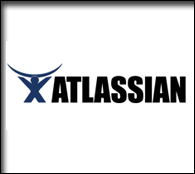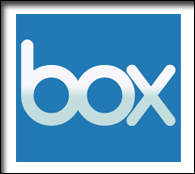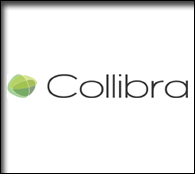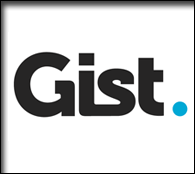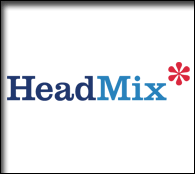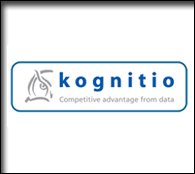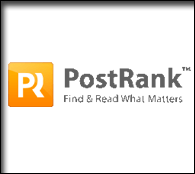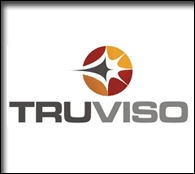defrag "theory"
On “shared situational awareness”
by Eric Norlin on Apr.29, 2008, under defrag "theory"
This morning I came across a phrase from Mike Gotta of Burton Group: “shared situational awareness.” The phrase comes in the context of talking about how Twitter is evolving into the mechanism by which we are letting each other know about everything else (including our “out of office” status). Indeed, Graeme Thickins (Minnesota’s uber alpha-geek) has stated that Twitter is “the only email sig I need anymore.” That might be overstating it a bit (or it may not), but it does point to something that a lot of us involved in the twitter-experiment know: there is a shared space that is no longer living on the blog of person, but rather in the space between people; in the conversation; in the comments; in the twitterverse.
I can see the examples every day. When I wanted to introduce myself to Sam Lawrence, I did so via Twitter. When I “tweeted” about “shared situational awareness,” Paul Kedrosky responded by suggesting an appropriate acronym. And in nearly all cases, I’m not “sending a message” to anyone (nor are they to me), rather we’re all engaged in talking around something - in a (yep), “shared situational awareness.”
All of it dovetails into things that I keep reading from Clay Shirky. The “cognitive surplus” that people used to “spend” on TV is now spent interactively. The method for “brainstorming” is not an individual having a revelation, but a shared space that leads to an “aha.” Quoting Clay:
“Burt says good ideas are not typically the province of an individual having a brainstorm, they’re often an import-export business, they involve people who see across multiple lines of business and understand, ah ha, if the engineers knew what the designers knew and the designers knew what the engineers knew, we could actually do 10% more at 10% lower cost. Those kinds of intuitions can only be had when people are talking to each other outside the traditional lines. “
Perhaps, most interestingly (from my POV) is how session ideas like “Finding serendipitous information through context” are rising to the top of what Defrag attendees, speakers and sponsors want to explore. Its not just that information “finds me better.” Or that search “works.” Its that something happens in a shared space that both A) makes more intuitive how I deal with information; and B) leads to “us” discovering something. All of which is to say that the implicit, semantic, collaborative web is probably all of the above (implicit, semantic AND collaborative -which is really an explicit act).
What ultimate role does Twitter or wikis or semantic technologies play in all of this? Frankly, I’m not sure. But I do know that we won’t get there in a private space.
Social Computing and Defrag
by Eric Norlin on Apr.11, 2008, under defrag "theory"
From the beginning, Defrag has worked in the intersections of topics: implicit web, semantic web, collaboration, enterprise 2.0, etc. So, it seems fitting to see articles like this that highlight how vendors like Vignette are waking up to “social computing.”"Social Computing” - for what its worth - seems to be the new term that encompasses and combines collaboration tools with some more “social” qualities. Think of it as blogs, wikis, tags, feeds and networks rolled into one.And in a tangle of that stuff, all that I can think of is how important semantic intelligence, next level discovery and contextual recommendations are going to become.Â
Yet another “coming war” in IT
by Eric Norlin on Mar.19, 2008, under Uncategorized, defrag "theory"
I admit that I get a bit tired of the old “war” metaphor in all things IT. Yet, I did find this entry on “the end of software” rather interesting. Basically, the piece highlights how “social software” (enterprise 2.0y things) is getting bought by departments and functionaries that aren’t traditional IT buyers. Further, it goes on to say that this change in pattern is part of a larger trend that will forever alter how enterprises consume “software.”
Is it right? I’m not sure. But the movement itself seems indicative of the “consumerization of IT” wave, and something that is highly relevant to Defrag.
Heading into Defrag 2007, I was absolutely convinced that we’d be dropping the “end-user facing” angle and moving toward “enterprise stuff” (solely) by 2008. Let me be perfectly clear about this: I was FLAT OUT WRONG.
The attendees spoke very loudly and clearly about the fact that they wanted that “end-user” side to things — and not because they weren’t “enterprise people” looking to buy software -not at all. Rather, the motivation came from the fact that these “enterprise people” understood just how important viewing and understanding things which live on the “end-user” side is (plug: yes, we have the smartest group of people around gathering around this.)
These people “get it”; they know that its not what *they* purchase for the enterprise setting that matters, if all of the users (employees) are experiencing, using and even *buying* different things. They get that understanding the relationship between the end-user and enterprise silos is increasingly important. They understand that being familiar with technologies like Lijit or HiveLive can only increase their ability to do their jobs well (and how long is it, really, before someone in the enterprise is utilizing Lijit on internal Sharepoint driven-blog networks? Heck, maybe its already happening - lijit?).
So, the purchasing decision may be shifting and moving, but I don’t think its the shift and move that’s important (then again, I’m not an enterprise software salesman). What’s important is understanding how both realms influence each-other. That understanding leads to getting why “file-based” systems are so different from “people-based” systems. And those issues are something that every IT executive *needs* to wrap their head around yesterday.
For more on this topic, please check out Sam Lawrence’s blog.
There is a point where the future meets the present, and its precisely in discussions like this. Welcome to Defrag.
Structure, Un-structure and Dry Toast
by Eric Norlin on Feb.28, 2008, under defrag "theory"
Fraser over at AdaptiveBlue has me thinking about the “semantic web” this morning. More specifically, he has me mulling over Matthew Ingram’s idea the the “semantic web” (as a talking point) is as boring as “dry toast.”
AdaptiveBlue is what some folks might call a semantic web company. Really, though, its more helpful to think of what they’re doing as “contextual browsing.” Is that just personalization all over again? Eh - not really.
Personalization tailors content within a specific domain (a website) to one individual. At least, that’s how I think of it.
Contextual Browsing builds implicit structure into unstructured data in a cross domain setting.
Which brings me to one of the key qualities of the defrag space: working cross domain.
Whether we’re talking about enterprise 2.0 tools, semantic tools, implicit tools, collective intelligence tools — the common denominator is working “cross-domain.” Enterprise 2.0 (and online collaboration) tools work across departmental domains (or knowledge domains, or employee domains). Implicit tools bring to the surface bits from varying domains. Collective intelligence tools cross the barriers of individual beliefs and knowledge. And contextual browsing takes the experience of the web from being one of a localized “place” (a site) to a network of connected ideas.
And that’s not boring.
Thanks for the push, Fraser. Good stuff.
Discovery and Search
by Eric Norlin on Feb.23, 2008, under defrag "theory", general
Pete Warden has a post up about how “discovery” is different from “search.” We’ve included “next-level discovery” (embodied by companies like Lijit and AdaptiveBlue) as a defraggy topic since day one, and Pete does a great job of teasing out some nifty threads.
The main points that Pete makes include:
1. “Search is goal-oriented, discovery is about the journey.”
2. “Search is solitary, discovery is social.”
3. “Search is about universal answers, discovery is customized. ”
4. “Discovery is a background task.”
ahhh, there’s that whole “implicit” thing again. ![]()
Gettin’ Defraggy with it
by Eric Norlin on Feb.12, 2008, under defrag "theory", general
I’m pulling together a bunch of different threads and bread-crumbs today, and they may or may not make any sense when I’m done, so bear with me.
Thread 1: Esther’s piece about The Coming Ad Revolution, specifically two quotes (strung together):
“What might seem like a horribly complex and tedious task to their elders — categorizing “friends,” managing news feeds, handling intersecting communities of contacts — feels natural to the Facebook users of today. They want more granularity of control, not less…The new model creates a more trusted environment for reaching high-value, frequent purchasers, whether of airline tickets, electronics, clothes or other items. Where does that leave the less-frequent purchasers? Probably looking to their friends rather than to advertising for advice. I’m an expert on travel; my friends may look to me for hotel choices. When I’m in the mood to buy a book or a new computer, I’ll check out what my friends on Facebook are doing.”
Thread 2: Jeff Nolan’s piece about attention data, specifically these quotes:
“Last year we did expose something we were involved with that speaks to the user perspective of attention, APML. This standard, which builds on the success of OPML, is attractive for some very important reasons. First and foremost, APML creates a single database about user subscriptions and attention data items, rather than attempting to merge and sync separate databases around each. Second, it’s a true industry standard that is emerging through a process of cooperation rather than imposition, and lastly, it makes attention data portable.
We fundamentally believe that data about your browsing habits is yours and that means you should be able to take it with you wherever you go. APML does this much in the same way that OPML does it for subscription data, and that has been a very successful model.
In many ways the ultimate commercial value of attention data is speculative, but we are not totally flying blind here either as we do have concrete examples about how it is enhancing the value of network functions that are important to our consumer and commercial clients. Speaking as a user, the APML piece is very important to me because I can accumulate this data over time and transfer it from service to service without penalty, and as more services take advantage of APML I will receive benefits as a user.”
Thread 3: This piece gloriously titled, “Is the Tipping Point toast?” about how networks *really* work (or, at least, the latest scientific work on it).
Enough threads, let me piece this together:
Last year’s Defrag really got me thinking about all of the implicit qualities that lie in our “networked actions.” So, for instance, Esther’s examples around FB involve a tremendous amount of “implicit-ness.” Example: I’ve only been face to face with Jeff Nolan 3 times in my life, but I trust his opinion on a wide range of topics- and I gather implicit bits about that opinion by interacting with his “personal media.” Even further, I trust his networked actions. If Jeff intros me to someone, I pay attention — not because I’m accountable to Jeff, but because Jeff’s actions within his own network have accountability.
His *attention* has gotten authoritative for me (at least around a certain set of topics).
As has Esther’s, or Chris Shipley’s (as it is for all DEMO go-ers), or Paul Kedrosky’s or Clay Shirky’s.
As a sum, my network of “authoritative attention” provides me with a pool of resources. Those resources are not tied to any platform (FB, LinkedIn) or any specific widget, and, as Jeff points out, the ability to move that data (via APML, etc) is becoming a bigger and bigger issue (I saw a CNN piece on it today, and if CNN is covering it, then you know its not “cutting edge” anymore).
Now throw in the piece about the “tipping point” being toast. The whole tipping point idea was based around “influencers” — that somehow if you could market to influencers, you could start a meme or trend or some other four letter word that’s hip. But its really not about marketing to influencers, its about gathering a pool of authoritative attention resources (your network) that begins to act as an implicit filter for the information overload that we all experience.
That network of resources is the most important “non-tangible” resource that any of us in the “knowledge worker” business have. It is also the single most tedious and clunky thing that we have to interact with — we simply don’t have good tools that help us implicitly mine that pool.
THAT is Defrag. That is why the Defrag topic is not “simply” web 2.0 stuff, but encompasses a lot of it. That is why Defrag crosses the enterprise/end-user barrier. And that is what makes the conference’s topic so unique.
Its taken me one year to start to put a rope around how to say *what* Defrag is. I’m not quite there yet, but at least that big, gray-space problem that I first began emailing back and forth with Brad about back in late 2006 is getting a little more clarity.
Cycles, Juxtapositions and Predictions
by Eric Norlin on Oct.25, 2007, under defrag "theory", industry stuff
I’m a “cycles” guy. Which is to say that I’m always inherently looking for the cycle or analogy as I read news and history. This, of course, biases how I see the world (and could result in a much larger argument about whether/why history is cyclical or linear - one we won’t have here). But my admitted bias does allow my brain to walk down some interesting paths.
This morning, I’m looking at 3 juxtapositioned thoughts:
1. This NYT’s article about the broadening of losses from the mortgage meltdown. Specifically, I’m keying in on this line: “If prices drop 5 percent next year, that would mean a decline of $60 billion in spending, all else being equal. That would be a noticeable slowdown, but not enough to cause a recession.” (Throw in here Mary Meeker’s recent statements about an upturn in the relative funk in enterprise spending — especially in the area of technology.)
2. The news from yesterday about Facebook investments (Microsoft, hedge funds), specifically what it all means for the cycle that I think exists in technology innovation — namely, that the startups and investments swing back and forth between “consumer-focused” and “enterprise-focused.”
3. The consumer-to-enterprise swing that we saw occur in the very early days of Digital ID World (and identity, in general).
Putting it all together, here’s what I’m thinking: Bottom line — Tech innovation is about to get very focused on selling to the enterprise.
Explanation (if rambling and nearly incoherent):
We’ve just gone through an incredible surge in “consumer-focused” startups launching. The mortgage meltdown (which I don’t believe will result in a full-blown recession), combined with the apparent coming uptick in enterprise IT spending, sitting next to a huge investment in what is ostensibly a consumer-focused platform (indication of a top, anyone?), says to my gut that a lot of companies that have started by thinking they’re consumer (or advertising or end-user or eyeballs or whatever) focused are about to realize the value that comes from selling to the enterprise.
It, of course, helps that many enterprises seem to be waking up to the value of some of these consumer-focused tools (see “the consumerization of IT”).
Which all brings me back to the early days of Digital ID World. Its useful to note that early on an awful lot of “identity startups” were trying to solve the consumer-facing side of that problem. After all, if you could be the one company to provide “digital IDs,” you’d be beyond monstrous. It never happened. What happened instead was a steady shift toward selling to the enterprise, and (eventually - as in 4 years later) a coming around to a grassroots movement to solve the “consumer-facing” side of things.
And here’s how it all relates to Defrag: I see a lot of the companies in the “defrag space” (including a lot of our sponsors) starting on the consumer-side of things. I also see nearly all of them making the shift toward the enterprise.
If you define the broad defrag problem-set as having the data that’s accruing on the Net come to organize itself in support of the individual (and groups of individuals), then its quite easy to come to see how the early tool-sets might be most useful in the “closed test labs” of the enterprise.
That’s actually why I think Defrag the conference is in such a unique position. Like digital identity, we can move through a cycle of “enterprise work” (and watch Defrag companies solve enterprise problems), and have that work lead to “consumer-facing” solutions.
If (big IF) I’m at all right on this, we’ll see “defrag sponsors” enter into a really strong growth period as the economy works its way through our consumer-focused slowdown and the enterprise spending picks up.
I’m not sure if that made any sense at all. ![]() And, obviously, if you think I’m wrong, I hope you’ll show up in person and debate me.
And, obviously, if you think I’m wrong, I hope you’ll show up in person and debate me.
[update: Maybe I'm even *late* to the game on this, as it looks like Microsoft is seeing a nice upturn in business spending.]
Keyser Soze moments
by Eric Norlin on Oct.08, 2007, under defrag "theory", industry stuff
I was musing on my morning walk about the similarities between the very first Digital ID World (2002) and the very first Defrag (in 4 weeks).
The first DIDW (as we took to calling it) gathered together anyone we could find that was interested in digital identity. There were some formal groups around (Liberty Alliance), and some very early topical treatments at other conferences (Catalyst - the other major “identity” show was then still a meta-directory conference), but really nothing that firmly addressed “identity.”
We were early enough in the cycle of things that 99% of the presentations at the first DIDW all began the same way: with a definition of “identity.”
There were a couple of hundred people there, and we were a little unsure of if the whole thing could be pulled off, but (oddly) it worked.
From that first year, so many unintended things happened (between years 2-3 of the conference):
1. Exhibitors that took the leap with us got acquired on a regular basis (some -like Wavset [acquired by Sun] can pin their acquisition directly to DIDW).
2. The topic moved from a “defnition” stage to a early product stage to actual real-life deployments.
3. Significant progress occurred around “identity thinking” — specifically, the impetus for things like Kim Cameron’s “7 laws of identity” came out of DIDW, and resulted in all of the OpenID work that you see today.
4. Successful startups like Ping Identity, Radiant Logic, Courion, Sxip Identity, Maxware, etc got their feet underneath them at the show.
Can DIDW take *sole credit* for all of this? Of course not. But the thing that I was musing about this morning was just how many of the really important folks in identity were either AT year 1, or heard the noise and came to year 2. The ripples of us doing something crazy (launching a conference about a topic that no one seemed to understand at the precise time when Comdex was going bankrupt) really did move out across the pond. Folks made money, enterprises had success and (pfff! insert keyser soze reference here) — just like that — the idea that “identity” couldn’t have its own conference was *gone.*
The feelings of analogy between Defrag and that first DIDW are very strong for me — which is significant if only because some other shows that I’ve launched or worked on did NOT give me the same sense. I guess that’s why I’m feeling compelled to write this.
My point is simple: While I cannot know what will come out of Defrag, my sense is that it will be similar to DIDW. If I’m at all right, then a self-perpetuating community will form — and an entire ecosystem (dare I say “niche industry”) will come to be.
Will Defrag be responsible for this? Absolutely not. The people there will be.
If you’ve ever wondered what it is like to see the birth of something, well, I think you’ve got a chance to see it very soon.
Enough musing — back to work! ![]()
[sidenote: None of the above is about "getting credit." Rather, it is about the really wonderful things that can happen when you don't care who gets credit and just go about trying to give people a space to create. ]
Web 3.blecccch
by Eric Norlin on Oct.04, 2007, under defrag "theory", general
Fred Wilson and Josh Kopelman take Jason Calacanis to task (if ever so slightly) over his definition of “Web 3.0″:
“Web 3.0 is defined as the creation of high-quality content and services produced by gifted individuals using Web 2.0 technology as an enabling platform.”
Blecch! If *that* is the next “version” of innovation (even if it is simply iterative), then I’m getting out of the tech industry and going into trucking or something, because just about anything sounds spicier than that. Wow.
Thankfully, Josh and Fred point to the “implicit web” as a starting point — and Josh, rightfully, speaks to the implicit web’s somewhat opaque definition.
Hey, I agree. From day zero of Defrag, Brad and I have been circling around definitions and ways of describing, and we’ve both arrived at some “standard” ways of talking about things that we think are implicit web-worthy. But even now, you can hear the subtle differences in the way Brad speaks about it and the way I speak about it — and that’s precisely how we want it.
Defrag (cue standard self-promotion) is all about us wanting to bring a group of really smart folks together to A) define the space and B) start working on the problem sets. Yes, we’re coming in with some presuppositions, but not so many that the group can’t take the whole shebang in a different direction if it so chooses. In one sense, Defrag is like one giant product management/feedback/focus group session for multiple vendors — all of whom are working on a *piece* of the Implicit problem.
Fred and Josh — will you be joining us? ![]()
Not to be missed
by Eric Norlin on Sep.19, 2007, under defrag "theory", general
This is why I so badly wanted Brian Oberkirch at Defrag — he’s just damn smart! And while you’re digesting that, go read the pointer to Jyri’s post — I’m trying to find space to invite Jyri to Defrag.
There are TONS of good things to think about in those two posts.
